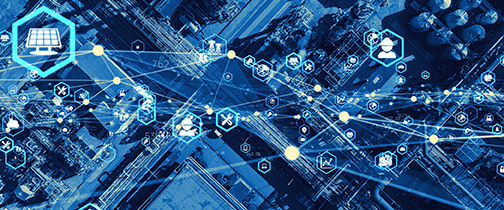Supply Chain Transformation for a Post-Pandemic World
Guest blog by MHI Member Company, UKG
Written by Robert O’Dwyer, Logistics Industry Principal
Studies suggest that in just the first six months of the pandemic, digital transformation accelerated by five to ten years — so what does that mean for the future of the logistics and distribution industry?
We’ve seen both the challenges and opportunities brought on by COVID-19 and are learning in real-time how organizations can prepare for more change ahead.
In fact, we’ve never seen anything like it. From the perspective of employers (and employees) in the logistics and distribution field, the COVID-19 Pandemic has created some of the most significant challenges that the industry has ever experienced, ranging from keeping employees safe with digital alerts and safety notifications, to the need to make real-time, better-informed decisions with their data to ensure customer satisfaction and employee experience.
I’d like to share practical advice for succeeding in the new world of logistics and distribution.
How the pandemic has expedited digital transformation in your industry
Let’s start with eCommerce. According to the AP, the pandemic collapsed into three months a process of adopting e-commerce that otherwise would have taken 10 years in the U.S. according to a recent survey by McKinsey & Co. We’ve seen that it is an enormous challenge for distribution companies to keep up with the demand.
The accelerated growth of online fulfillment and onsite order pickup or delivery is testing distribution centers like never before. To meet productivity goals, employee engagement and retention have become increasingly crucial, with companies requiring more advanced technologies to help them better manage employee retention, productivity, and labor cost optimization.
The competition for talented labor is more competitive than ever which is why we’ve seen a significant pivot of distribution companies becoming more focused on their workforce and how they can become what UKG refers to as an employer of choice.
Even with unemployment levels creeping down to 5.7% (6.8% for the distribution industry according to Statista), the war on talent still exists in the logistics & distribution industry, which means hiring and retaining top talent is still a top concern.
What’s important for many organizations to understand is that by focusing on and using your workforce management and human capital management platform to improve employee experience through employee work-life balance, employee self-service, and employee reward programs, you can also create significant operational value.
The pandemic has taught us about the immense need for flexibility in logistics and distribution operations as the uncertainty of the short and long-term future means we must be flexible and quick to adapt.
To better understand how we can achieve the goal of being an employer of choice, it’s important to understand what your employee’s desire, as well as the challenges you face in meeting these goals.
Employee work-life balance:
– Shift swaps and PTO requests from the safety and comfort of home and on the go with mobile apps
– Recognize and maximize the contribution of each employee’s desire for hours, including overtime
– Allow employees to set schedule preferences
– Use shifts that create opportunities for increased overtime acceptance
– Use a blend of static and variable shifts to engage a broader employee population
Employee self-service:
– Allow employees to set schedule preferences and use A.I. to make shift recommendations based on employer work history preferences
– Less supervisor time spent at their desk doing low-value work ensures they are on the floor mentoring staff
– Shift Bidding (static schedule workers) and vacation bidding
– Attest to time
– Attest to health or safety questions
It’s essential to attract and retain best-fit employees and manage them more cost-effectively so your transportation & distribution facilities can allocate labor to demand more accurately to help optimize labor costs, improve employee engagement and productivity, improve workforce agility, and drive stronger bottom-line results. There are countless ways to achieve these goals, and we know it’s not easy.
One proven way to accelerate your organization’s digital transformation with a truly connected global workforce experience is by moving beyond traditional definitions of HCM and WFM to look further and combine transformative technology with deeper workforce capabilities.
The importance of having the right technology
Ensuring your company is taking advantage of advanced WFM and HCM technology will be critical to keep delivering on your customer’s needs and employees viewing you as THEIR employer of choice.
Companies can (and should) utilize workforce and human capital management tools including mobile technologies to achieve productivity gains and an enhanced employee experience, leverage real-time analytics to support informed decision making, and use artificial intelligence and machine learning technologies to optimize scheduling to both demand and worker preferences. For the logistics and distribution industry, the future of work is happening now and the need to improve employee engagement, safety, and labor optimizations has been exacerbated by the pandemic.





